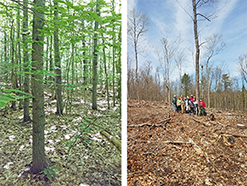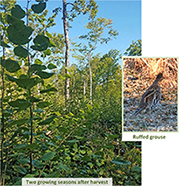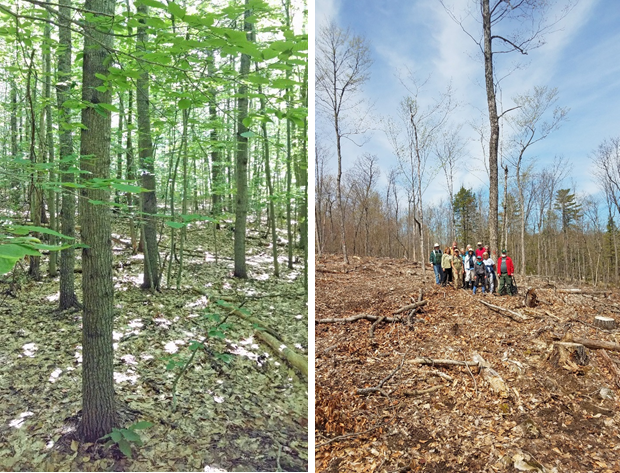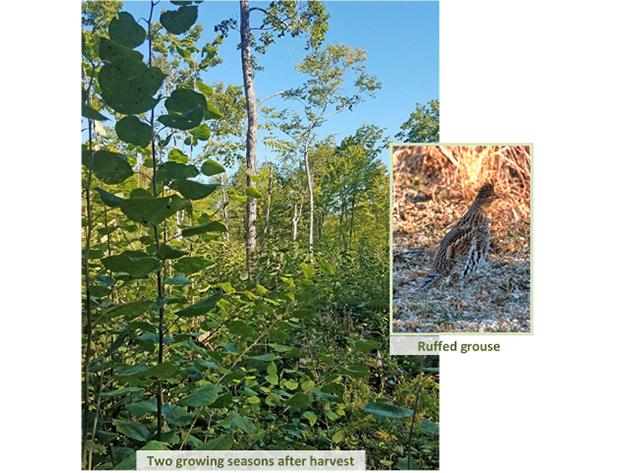DACF Home → Bureaus & Programs → Maine Forest Service → Projects → What will my woods look like? → Patch Clearcut: Young aspen pole and small sawtimber stand
Patch Clearcut
Site: Young aspen pole and small sawtimber stand

Woodland Owners’ View
There used to be a lot more partridge around here. One of the management goals is to bring them back.
Logger’s View
Popple on flat high ground is usually a productive combination. The patch clearcut prescription will be even more so.
Forester’s View
Clearcut a total of 20 acres of the stand to create early successional habitat in +/- 5-acre patches, focused on areas where mature aspen is present. The patches will regenerate primarily with aspen and will maintain that species as a component within the stand. Several high-quality stems should be left in each patch for future wildlife benefits and as legacy trees.

Woodland Owners’ View
It was fun to have a tour group come take a look right after the harvest was done. Can’t wait to go bird hunting next year, it should be great!
Forester’s View
As expected, two growing seasons and the aspen regeneration is too thick to see through. This early successional habitat will add diversity to the older woods around it.
Wildlife Outcome
Dense, young growth of a recently harvested aspen stand protects ruffed grouse from predators, especially from hawks and owls. Flower buds on mature male aspen trees are a life-saving food when snow cuts off ground feeding. Because grouse rely on both young and mature aspen, ideal habitat consists of small 5- to 20-acre aspen patches all close together but of different ages. American woodcock, chestnut-sided warbler and field sparrow also benefit greatly from young aspen stands. White-tailed deer rely on aspen throughout much of the year for both food and cover.
Equipment Used
Tracked feller buncher, grapple skidders.
Location:
Jamies Pond Wildlife Management Area, Manchester, Farmingdale and Hallowell
Maine Department of Inland Fisheries & Wildlife, Lands Management Program, Sidney
Eric Hoar, Lands Management Biologist
leigh.e.hoar@maine.gov

